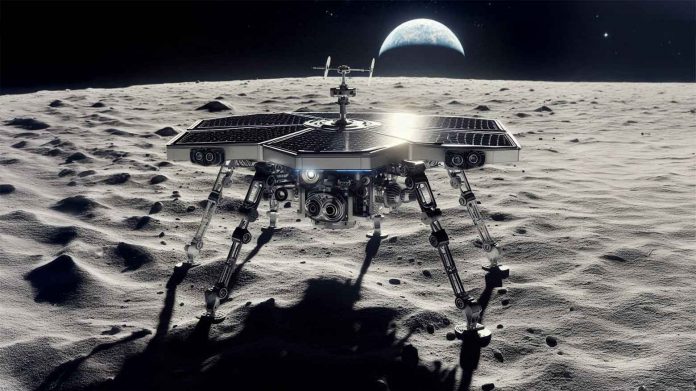In a move to advance lunar exploration, China is preparing to launch its Chang’e-7 mission in 2026. This ambitious project aims to search for water ice at the Moon’s south pole, potentially revolutionizing space exploration and lunar habitation.
Innovative Flying Robot Technology
The star of the Chang’e-7 mission is its “smart flying detector,” a first-of-its-kind robotic device. This innovative technology can jump, crawl, and fly using rocket propulsion, allowing it to explore permanently shadowed craters that are inaccessible to traditional rovers. The robot’s advanced navigation system enables it to land on uneven slopes and traverse challenging lunar terrain.
Mission Components and Objectives
Chang’e-7 will consist of multiple components:
- Orbiter
- Lander
- Rover
- Mobile hopper (flying detector)
The primary objective is to confirm the presence and distribution of water ice in the Moon’s south pole craters. These areas, perpetually shadowed from sunlight, are believed to contain ice deposits that could be crucial for future lunar missions.
Technological Advancements
The mission will showcase several technological innovations:
- A deep-space “landmark image navigation” system for precise landing
- Active shock-absorption technology for safe landings on slopes
- A relay satellite (Queqiao 2) to support communication and scientific experiments
Importance for Future Space Exploration
If successful, the Chang’e-7 mission could:
- Enable sustainable human activities on the Moon
- Reduce the need to transport water from Earth
- Support future Mars missions and deep-space exploration
The Chang’e-7 mission represents a significant step in China’s lunar exploration program and demonstrates the country’s growing role in space exploration technology. While the exact launch date and site are yet to be announced, past missions suggest that the Xichang Satellite Launch Center using Long March rockets is a likely candidate for this groundbreaking lunar expedition.
Related article: Hainan Plans 500 Takeoff and Landing Sites for Low-Altitude Aircraft: New 3-Year Action Plan









